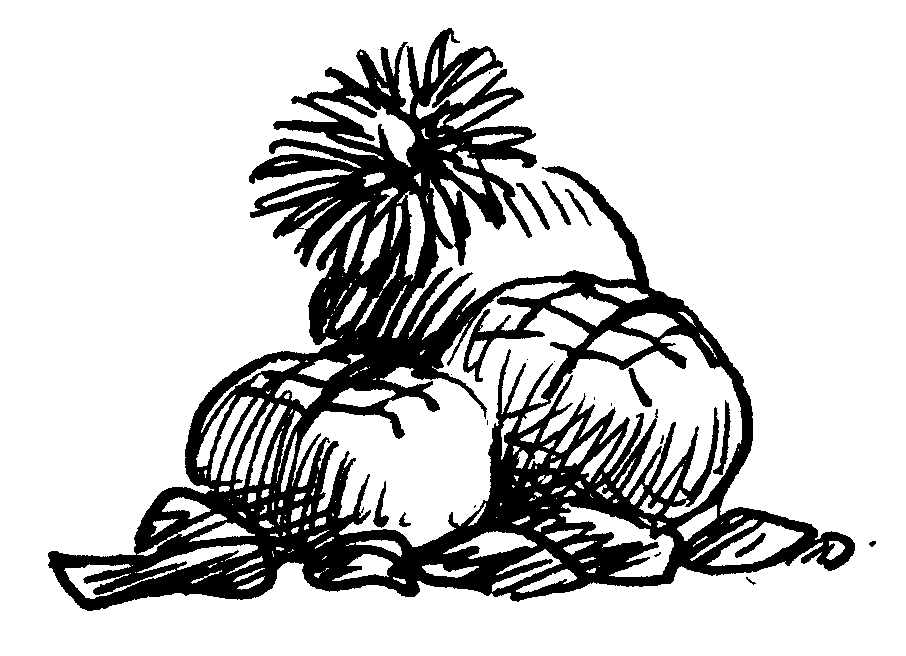| << Chapter < Page | Chapter >> Page > |
Like animals, plants have also made adaptations to survive under particular climatic conditions.
As water is of utmost importance for the survival of plants, their adaptations are related to the availability of water. Plants can be divided into three groups with regard to this type of adaptation.
Study the following sketches and classify the plants according to their structures as hydro-, meso- or xerophytes. Attempt to provide at least one reason for your classification in each instance.



HYDROPHYTE ADAPTATION EXPLANATION
Roots Poorly developed, only for anchoring
Leaves Large surface
Floating Cuticle (waxy layer) on surface
Air pockets in leaf
Stomata (small openings) on top
Stems
Very little strengthening tissue
Slimy layer
Rhizome (stores food)
XEROPHYTE ADAPTATION EXPLANATION
Roots
Shallow root system
Corky layer
Leaves
Few stomata, mainly on underside
Small or converted to thorns
Stems Thick and fleshy
Waxy layer
Could you supply correct explanations for each adaptation?
Assessment of assignment: [LO 2.4]
The San most probably were the first people to live in Southern Africa and we still think of their ability to survive such dry conditions with astonishment. Water was a very limited resource.
But we do not have to go very far to discover some of the solutions that the San found centuries ago in nature and in plants (xerophytes), in particular.
Read about the natural vegetation of the desert-like parts of our country.
Write a story about the survival of a plant in the Kalahari Desert. Write this from the point of view of the plant. Let the plant do the talking to describe the conditions and how it manages to survive, and how it helps other plants, the San and animals to survive (its role in the food chain). Refer to the San people and how they used plants to survive.
Assessment of assignment:




Examine the sketches of these unusual xerophytes – which adaptations do they exhibit?
ALOE
CACTUS
LITHOPS
WELWITCHIA
Match the items in the following columns by writing the letters from COLUMN C in the appropriate spaces in COLUMN B. More than one match is possible.
[LO 2.4]
Most xerophytes are used as medicine and for a variety of other purposes in different cultures. Even primitive cultural groups practised science thousands of years ago by determining the value of plants and finding ways to use them.
Do research on the Internet, in books and in libraries.
Write a research report, using the following headings:
Examples of the use of plants by cultural groups in South Africa.
Discussion of three specific plants, including the aloe ( Aloe verox) (characteristics of the plants and medicinal, economic or other value).
Assessment of RESEARCH PROJECT:
[LO 1.1; LO 1.2; LO 1.3]
Learning outcomes 1: Scientific investigations
The learner will be able to act confidently on curiosity about natural phenomena, and to investigate relationships and solve problems in scientific, technological and environmental contexts.
This is evident when the learner
1.1 is able to plan investigations;
1.2 is able to conduct an investigation and collect data;
1.3 is able to evaluate data and communicate findings.
Learning outcomes 2: Constructing Science Knowledge
The learner will know and be able to interpret and apply scientific, technological and environmental knowledge.
This is evident when the learner
2.4 is able to apply knowledge.
Learning outcomes 3: Science, society and the environment
The learner will be able to demonstrate an understanding of the interrelationships between science and technology, society and the environment.
This is evident when the learner
3.1 is able to understand science as a human endeavour.
Activity: IDENTIFICATION: PLANTS
Activity: EXPLAIN THE FOLLOWING ADAPTATIONS
ASSIGNMENT: Story
Class activity: XEROPHYTIC PLANTS – ADAPTATIONS
ASSIGNMENT: Research project
Growing regions
Special properties of the plant, especially the leaves
Medicinal and economic value of the plant

Notification Switch
Would you like to follow the 'Natural sciences grade 8' conversation and receive update notifications?